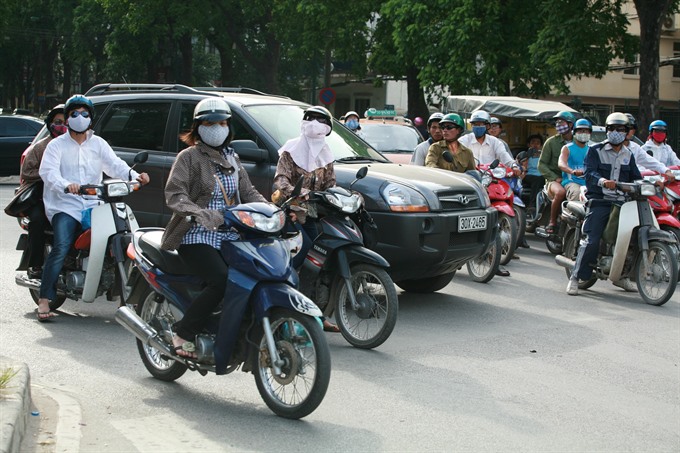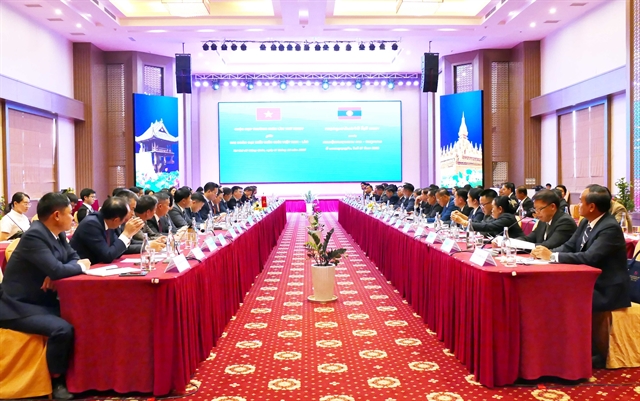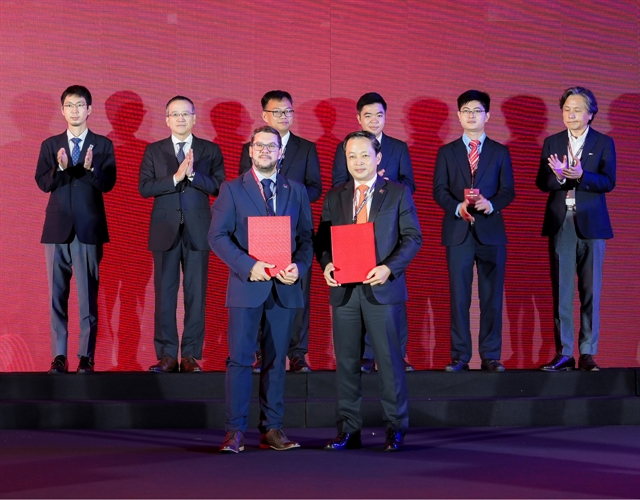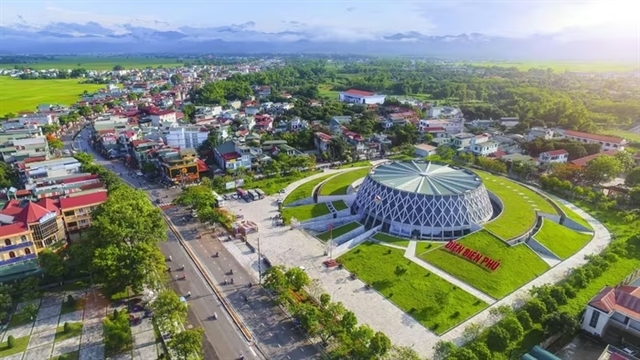 Environment
Environment

Việt Nam needs to implement policies of climate change mitigation in an inclusive and comprehensive way. Of that, mitigation actions might benefit the most disadvantaged and vulnerable people, experts have said.
 |
| Citizens in Hà Nội wear masks to avoid exposure to air pollution. — VNS Photo Trương Vị |
HÀ NỘI — Việt Nam needs to implement policies of climate change mitigation in an inclusive and comprehensive way. Of that, mitigation actions might benefit the most disadvantaged and vulnerable people, experts have said.
The statement was made at a conference on solutions to limit global warming held between the Ministry of Natural Resources and Environment and non-governmental organisations on Thursday.
Nguyễn Văn Huy, representative of the ministry’s Department of Climate Change, said that Việt Nam’s development towards becoming an industrialised country has increased impacts on the climate, especially greenhouse emissions.
In 2013, emissions were 3.5 times higher than in 1991, and are forecast to triple by 2030 compared to 2010.
Thus, the country has set up and implemented climate change mitigation policies to gradually shift the domestic economy towards a low-emission growth path.
Huy said the Vietnamese Government has committed to reducing greenhouse gas emissions by 8 per cent, to 25 per cent with domestic resources only or with international finance as part of efforts to limit global warming to below 2 or 1.5 degrees Celcius.
Currently, authorised agencies are focusing on the evaluation of greenhouse gas emissions in many fields.
Huy said experience and lessons shared at the conference would help the country succeed in achieving its target.
Julia Balanowski, an independent consultant, said that Việt Nam seemed to pay too little attention to mitigation actions that might benefit the most disadvantaged and vulnerable people.
She said that 70 per cent of the world’s population still lived in poverty, and many in rural areas faced a high number of blackouts and shortages of clean water and adequate sanitation.
Living on the edge of poverty, these people had very low per-capita emissions, which was much less than those in industrialised countries. However, they were the most affected in terms of development disadvantages and low resilience to the impacts of climate change.
She cited that in many cases, subsidies for energy projects or reforestation take land away from agriculture, seriously affecting incomes and agricultural production of local people. In some other cases, local residents were displaced to serve such projects.
Balanowski said that politicians and citizens needed to understand the links between mitigation actions and the welfare of the poor and most vulnerable in Việt Nam. This would be essential for the sustainability of any mitigation actions.
Vũ Minh Hải, chairwoman of the NGO Climate Change Working Group, said that Việt Nam needed a portfolio of climate change adaptation and mitigation measures.
She explained that there were differences and trade-offs between adaptation and mitigation. For example, some adaptation measures could increase emissions such as the construction of sea dykes, which degraded mangroves or reduced carbon sinks.
Meanwhile, mitigation actions could reduce adaptive capacity. For example, a project of investing in renewable energy or large scale reforestation would lead to displacement of populations and threaten local food production.
Hải said industrialised countries needed to uphold their ecological debt towards countries such as Việt Nam, and vulnerable groups should have the opportunity to pursue mitigation as an option.
At the conference, experts suggested that Việt Nam should consider fairness and equity in climate change mitigation activities such as developing a set of poverty-focused measures and starting common dialogues about sustainable development for all involved.
Policies in climate change mitigation, adaptation and development strategies needed to be discussed and planned in conjunction with each other to ensure inclusiveness.
The country also needed to improve government resourcing to build institutional capacity, create supporting schemes for the poor to implement green agricultural technology or biotechnology. — VNS




